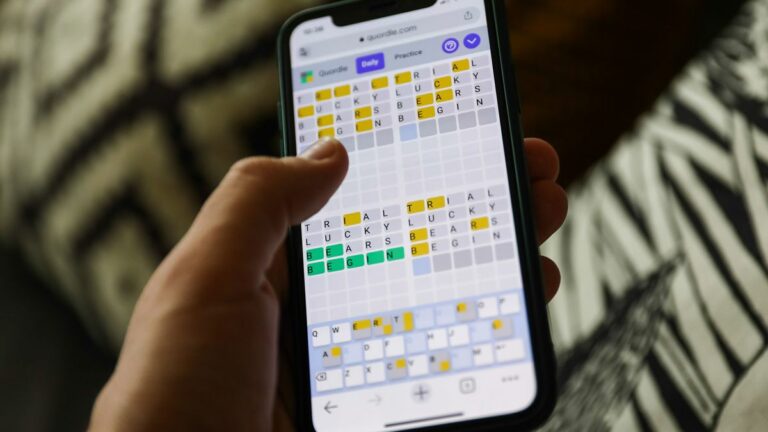
8.5
Jackery Explorer 2000 Plus
Like
Expandability
Platform pricing
Stability
Don’t like
Lack of features
Lack of connection options
The Jackery brand has been around for a while (it was founded in 2012) and has been one of the most consistent brands of power stations I’ve tested since 2018. The Explorer 2000 Plus has been at the top of my list for a while now. The dependability of the brand is a big reason why.
Add a few other pluses to that and you have a brand as well as a product line that are at the core of the movement toward energy independence.
Here’s the good — and the less good — about the Jackery Explorer 2000 Plus portable power station.
Jackery Explorer 2000 Plus: The good
The big draw for me is modularity. I think the modular approach is one any company that is serious about the future of power products must take. I’ve been talking about this for years, and Jackery was one of the first companies that seemed to fully embrace the concept.
When you look at home backup through the modular lens, everything makes more sense. Cost of entry is lower, repair and replacement costs go down, and your ability to scale your system over time as your needs (and knowledge) increase cannot be undervalued.
Like other companies now, Jackery offers expansion batteries the same capacity as the 2000 Plus: You can add five more batteries for a total of 12kWh of capacity. You can also purchase a Jackery Connect and add a separate Explorer 2000 Plus and five more expansion batteries for a total of 24kWh of capacity. This is plenty of power for most homes.
Another point that plays into Jackery’s accessible modular platform is pricing. The core Explorer 2000 Plus unit stays in line with most major brands that price capacity around $1 per watt-hour. If you’re looking at a unit like this with around 2,000wH, then you should expect to pay around $2,000. But Jackery does win out in its pricing on expansion batteries. That price scales down closer to 60 cents per watt hour, while many manufacturers stick to the dollar-per pricing for the same.
The physical size and capacity of this unit and its expandable batteries also make it ideal for portability. It weighs 60 pounds, but it has a great set of wheels and a telescoping handle to help you move it around. Being able to take this unit from your home backup setup to on-the-go will appeal to many people, especially if you aren’t interested in spending the same money twice for something you could just grab on the way out of the house.
Jackery Explorer 2000 Plus: The bad
Jackery is not known for its pizzazz. It doesn’t use a lot of flashy gadgets or features to draw you in. And most of the time that is good. This is how it has earned a reputation for stability and consistency. But there are a few features I would like. One is wireless charging. Having an easily accessible place to drop your phone for a few percentage points is just the way life has evolved.
When we talk about the usable capacity of portable power stations, the industry says you should be able to count on about 85% of the stated capacity of the product. I’ve found over time that most of the better products can hit the 90% line. Jackery is one of the exceptions. Of most of the major players in this space, I find that Jackery’s usable capacity of most units is, on average, about 5% lower than its competitors. We’re not talking about world-changing numbers here, but since its product lines test consistently at this level, we’re assuming this is a design choice.
One of the only other gripes I have is that I don’t have the option for 240-volt output with a single-core system. You can’t get 240V output until you combine two of the Explorer 2000 Plus systems. Compare this to the Anker Solix F3800, which does allow for 240V output on the core unit and you’ll know why I rated that unit half a point higher than this Jackery.
Jackery Explorer 2000 Plus: The bottom line
If you need a dependable system to just work, Jackery could be your best choice. This 2000 Plus platform is expandable to a point where most any home can be supported, and at a price much less than some of its competitors. I also feel that the Explorer 2000 Plus is the perfect size for people who are more active and want to be able to quickly take advantage of their modular system when needing to take power on the go.
Factors to consider when choosing a portable power station
-
Capacity
This is really the main point of a portable power station. How many times can you recharge that phone? Or how long will that light run?
-
Charging Outputs
So many to choose from… AC receptacles, USB ports, wireless charging, RV connector, EV connector… make sure it has what you need!
-
Charging Inputs
Other than the main AC charging via receptacle, some people specifically need DC charging on the road, or solar panel charging.
-
Features
Once all your basic criteria are met, check out the nice-to-haves. Ability to add additional batteries? Modular pieces to spread around your power?
How we test portable power stations
Currently, we look at two main performance metrics for portable power stations: charge time and discharge capacity. Every company that sells portable power stations provides the expected number of watt-hours its products are supposed to last. For the Jackery Explorer 240, that’s 240 watt-hours; for the Ecoflow River Max, it’s 576 watt-hours. Bluetti AC200P claims 2,000 watt-hours.
That means if you run a device with a 1-watt output on the Jackery Explorer 240, it should last for about 240 hours. You’d get 576 hours from the Ecoflow model and an impressive 2,000 hours using the Bluetti generator. That would last you almost three months. For reference, a USB-C iPhone charger draws up to 18 watts, a 3-quart Instant Pot draws 700 watts and a standard microwave draws around 600 to 1,200 watts, depending on the model. How accurate are those figures?
Usable capacity
A power station’s capacity should be a no-brainer. You should be able to look at a device’s rated watt-hours and purchase accordingly based on your needs. Generally, you can do that. I’ve found that you typically won’t see the entire capacity rating as usable power.
Lots of factors can affect this, and most of them center on how the manufacturer chooses to build their units’ internals to manage their charged capacity. There is some (usually negligible) amount of power that goes to fuel the various indicator lights and readable LED panels on the units. Some of the larger units even have their own operating systems, so it’s almost like powering an additional mini PC on the inside. Other units can have power-saving features where they reduce outgoing bulk power as they come close to depleting their charge.
To run our capacity tests, we connect several 10,000-lumen LED work lights, rated at 110 watts, to each unit. (The number of work lights is based on the overall watt-hour rating of the unit under test, or UUT.) We record the outgoing voltage and wattage using external measurement instruments or the UUT’s own measurements if available. Once we have this data, we can leverage the calculations into a dizzying array of information about the UUT’s performance. The main piece of information we look at here is the observed capacity, based on our measurements, compared to the UUT’s stated capacity.
Here’s that mass of data in a nifty chart, where longer bars indicate power stations with greater percentages of battery capacity that you can put to use.
In every case, that percentage ends up at less than 100%. Most manufacturers say you should calculate expected usage at 85% of the stated capacity. Two of our smaller units (green bars) both clocked 98% capacity — the Jackery Explorer 240 and the Togo 350. Generally speaking, the midsize units (blue bars) didn’t fare well. The large-sized units (yellow bars) did better, with the Bluetti AC200P scoring highest at almost 96%. As for our extra-large units (purple bars), the 3,600Wh EcoFlow Delta Pro fared the best, with a usable capacity rating of just over 92%. Behind it, Oupes, Mango, Yoshino and Dabbsson each had extra-large power stations (at least 2,200Wh) that scored above that 85% benchmark for usable capacity.
A quick word on our math here. If you blindly accept both a unit’s stated capacity and our work light wattage rating of 110 watts, the numbers look very different. For example, we will take the GoSun PowerBank 1100 (to make the math easier) and attach four of the 110-watt lights. That load rating is now 440 watts and the GoSun’s capacity of 1,100 divided by 440 is 2.5. We would expect to see 2.5 hours of usage. The actual run time for this unit was 2 hours, 50 minutes — 113% capacity. Sounds great, Right? We’re missing some key factors. Without going into a long(er) explanation of how to more accurately measure power, the fact that this unit has an output of 110 volts AC (compared to 120VAC) and the actual output wattage to the four lights is 352 watts, our real expected run time is 3 hours, 8 minutes, which drops the capacity rating to 90%.
One other testing note for these numbers — the Oupes 600-watt data might be off. The unit turned off the lights at 9%. It would allow me to start the lights again but would turn them off again after some time. I repeated this process at least 20 times before the unit wouldn’t power the lights for more than a couple of seconds at a time.
Charge time
Charging performance can be nearly as important as knowing your capacity stats. It helps to know how long your device will take to charge, especially if you’re crunched for time or need to be able to charge quickly for whatever reason. Will it take 1 hour or 2? What about 10? Or 12? (That’s an actual number from our tests.)
We report three data points for charging performance. Each unit is plugged in for AC charging and we record how long it takes to reach 50%, 80% and 100% charge. Half-full is probably the least amount of power you’re going to want, especially from the smaller units. 80% is the “magic number” for many rechargeable batteries.
Here’s a simple-ish way to illustrate it: Imagine a swimming pool with room for 100 people, each person representing 1% of the total space. When you first start charging, and that first person dives in, you don’t have much to worry about. You’re not going to run into anyone else, so dive, splash around, whatever you want. As we add people, it gets a bit more crowded and complicated. You’ve got less room for people. Once you have 80 people in the pool, that next person is going to take a few extra seconds to choose their entry without causing any issues rather than just jumping and hoping no one is in the way.
Each manufacturer deals with this purposeful slow-down in its own way, so you won’t see the same performance changes from one manufacturer to the next. True to the analogy, person number 100 into the pool can sometimes be very slow, taking several times longer to get in than any of his predecessors.
Take a look at the full charge test results below. Charge times are listed in hours, so shorter bars indicate power stations that charge faster. In many cases, you can see how the charge rate is fairly constant between 0 and 50% (red) and from 50 to 80% (yellow), before slowing down from 80 to 100% (green).




















+ There are no comments
Add yours